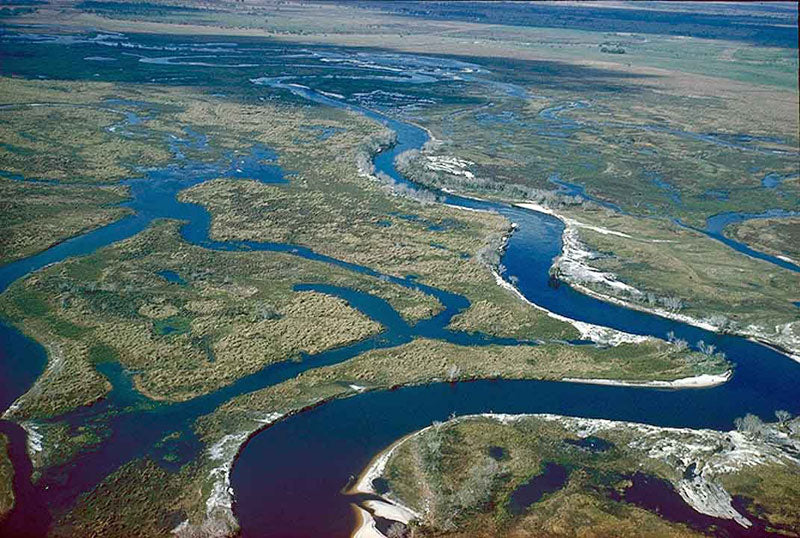Six decades ago, the Kissimmee River in Florida flowed over 100 miles, nourishing the lush wetlands along its path from the Kissimmee Chain of Lakes to Lake Okeechobee. However, in the 1940s, flooding and hurricanes prompted the state to seek assistance from the federal government in constructing an extensive system of canals and waterways to drain the land.
As a result, the Army Corps of Engineers embarked on a project in the 1960s to transform the winding Kissimmee into a deep, straight canal.
The consequences were devastating for the local ecosystem. Within a few years, waterfowl populations plummeted by 90 percent, bald eagles by 70 percent, and numerous species of fish, birds, and mammals vanished.
The channel acted as a conduit, carrying water away from the landscape, ultimately draining it into Lake Okeechobee and the ocean. While this prevented immediate flooding, it also depleted the stream of oxygen, leading to the decline of fish and hindering the wetlands' capacity to absorb nutrient pollution.
The ecological devastation resulting from this disruption was impossible to ignore.
Starting in the 1990s, the Army Corps collaborated with various state, federal, and local partners to undo the damage.
Over two decades and with a cost exceeding $1 billion, the physical restoration of the river is now complete. The project involved reestablishing and rehydrating 40 square miles of wetlands.
The positive impact on biodiversity is already clear.
As the wetlands have recovered, so have the bird populations. Lawrence Glenn, director of water resources with the South Florida Water Management District, describes the response as "immediate and remarkable". Almost half of the river has been restored to its original state by filling in 22 miles of the canal, reshaping sections of the old river, and reviving 44 miles of its natural meandering paths.
Shannon Estenoz, assistant secretary for fish and wildlife and parks with the Department of Interior, praises this achievement as "a testament to imagination and collaboration between the federal government, the state, and other organizations".
Estenoz, who previously worked with multiple environmental organizations in Florida, emphasizes that the restoration has already led to the return of several species that had disappeared during the canal era, including ibis, bitterns, avocets, and sandpipers.
The transformation is striking. The once abrupt edges have been replaced by dense vegetation, including thickets, grasses, sabal palms, and oaks. Bald eagles, herons, egrets, and limpkins can be seen flying in the air and nesting in the trees.
Surveys conducted reveal that the Kissimmee River now hosts 50 fish species, nearly 70 species of wetland-dependent birds, over 20 reptile and amphibian species, and four mammals that exclusively inhabit the rehydrated marshes.
A feeling of hope
The project's success demonstrates the possibility of acting on a large scale and showcases the remarkable speed at which ecosystems can recover.
This is encouraging because if we work together to reduce CO2 emissions and fight climate change, it is possible to hold temperature rise to 1.5 degrees celcius.
It's a #WinForThePlanet 🙌🏼
PS - if you'd like to bring a sustainable dishwashing routine to your home and reduce your plastic-use and carbon footprint, check out our Dishwasher Detergent Sheets >>


2 comments
Thank you for continuing to spread the good word and help people understand what is at stake!
This is great news. Birders will flock to this river.